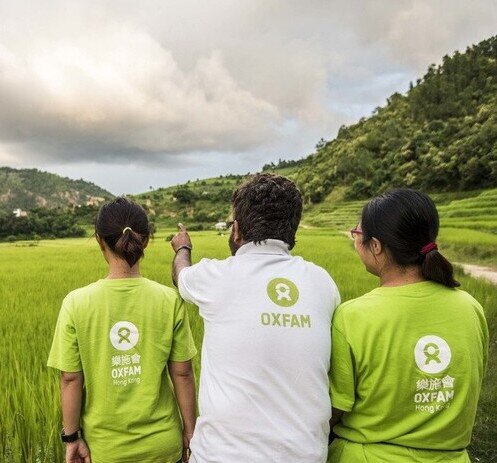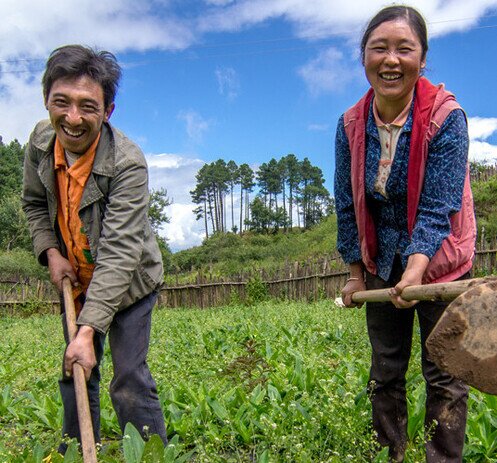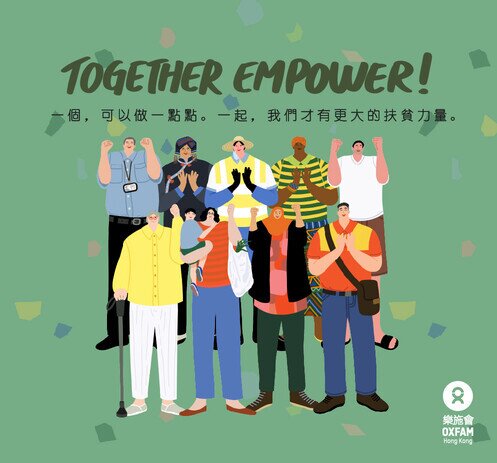Caption: Oxfam is implementing community-based development projects in Beichuan, Sichuan Province. Together with villagers and our partner organisations, smallholder farmers there have been able to improve their lives and develop sustainable livelihoods. This has been achieved through efforts like building infrastructure, skills training, enriching villagers’ lives through cultural initiatives and community participation in constructing facilities in their own villages.
About our work
Building sustainable livelihoods provides a way out of poverty. Our work concentrates strategically on western provinces such as Yunnan, Gansu and Guizhou, where our rural livelihood programmes focus on four major areas: increasing incomes, disaster relief and risk reduction, climate change adaptation, as well as community self-organisation and management.
Oxfam advocates a community-driven approach to manage our projects. Rural households can participate in the management of the projects including their design and implementation, monitoring and evaluation, so that the resources can benefit the poorest households and improve their livelihoods more effectively.
Together, we can transform more lives!
Publications
- Rural Development Programme Brief
- Rural HIV Programme Brief (Chinese only)
Stories
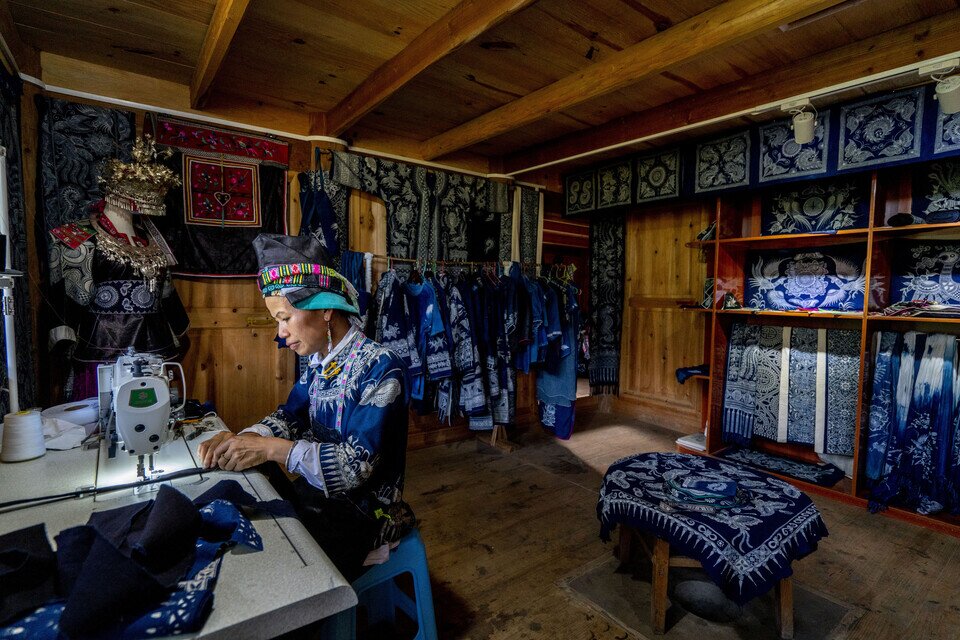
The villagers of Jijia Village are Hmong batik artisans, but lived in poverty until they joined a project Oxfam and our partner tailor-made for them.
Located deep in the mountains is Jijiamiao Village of Yangwu Town, Danzhai County, Guizhou Province. Their batik, which is known as the ‘Best Dye in the Orient’ is the first batch of items to be recognised on the Lists of Intangible Cultural Heritage in China.
Danzhai County is a multiracial area where Hmong is the main ethnic group. Since the transportation network there is not well developed, Danzhai County is isolated and inhabitants have gradually become self-sufficient. According to Hmong custom, women have an obligation to learn batik, and mothers have to teach their daughters how to make batik fabric. In fact, most Hmong women begin learning to make batik as children. They cultivate cotton, spin and weave, tailor and finally dye. Having the skills passed on from generation to generation, this ancient art form has been preserved and each Hmong woman in the area produces exquisite batik.
Jijiamiao Village is located in the southern part of Danzhai County, and all of the 678 inhabitants are Hmong. Of this population, 70 per cent are migrant workers. Further, 433 people in the village live in poverty, and the annual income in the village per capita is less than RMB 2,500. Despite their exquisite batik skills, they still live in poverty as challenges like transportation leave villagers unable to sell their products.
In response, Oxfam and Education for Sustainable Development Center of Guizhou Normal University have been implementing the Traditional Batik Culture Preservation and Development Project of Jijia Village, Danzhai County of Guizhou Province since 2017. Through this project, villagers have a platform through which they can cooperate and communicate, and participate in different exhibitions and events that promote batik. Not only can villagers protect and further develop the art form through the project, they can also expand the market, and ensure their community develops sustainably.
Close to 50 Hmong women joined the batik cooperative that was set up there, and more than 10 people set up their own home-run business. By communicating with and learning from people outside of the village, villagers were inspired to use the ancient art on modern clothing, daily necessities and fashion accessories. As a result, there was an increasing variety in the batik products they made, and the number of sales channels grew. Some women even learnt to sell their products online.
At present, Jijiamiao Villages makes close to RMB 2 million a year from sales. By running their own batik shop, villagers can not only take care of the elderly and children in their homes, but also earn an income to alleviate their financial burden.
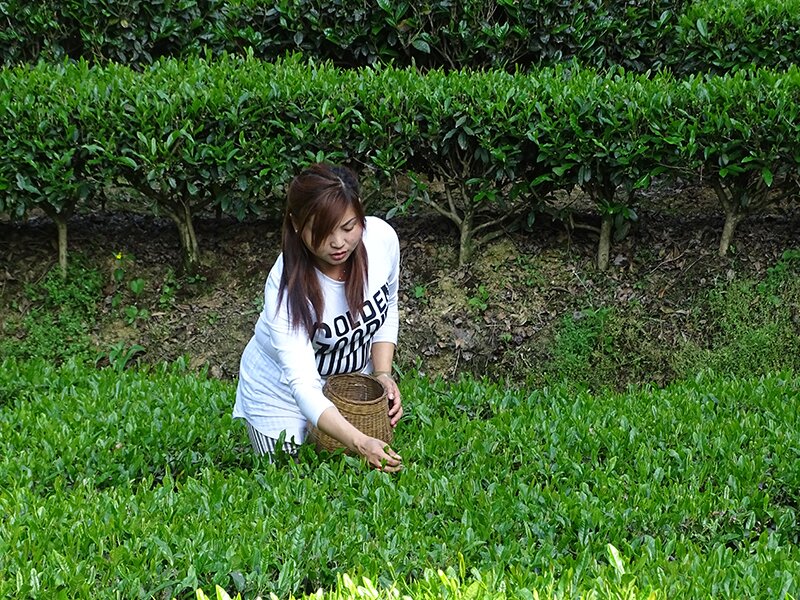
‘I thank Oxfam very much for their support. They have taught me to consider agricultural development issues from the perspective of the entire village.’
-- Liu Juan
‘In recent years, the village has seen increasingly heavy rains, and floods are more severe than ever. I believe climate change is the main reason why this is happening.’
Asked about the flood in 2012, Liu Juan, a long-time resident of Liugou Village in southern Shaanxi Province recounted the disaster with fear: ‘The flood submerged the entire house. Over 7,000 catties of dried tea leaves were washed away. All furniture and appliances were damaged by the flood too.’
The flood not only wrecked Liu Juan’s house, but also destroyed the village that had been producing tea leaves for generations. After the flood, Oxfam worked with a local partner organisation to implement the Post-flooding Rehabilitation Project in Liugou Village, Nanzheng County, Shaanxi Province, which subsidised the restoration of infrastructure like roads, bridges, the sewage system and water supply. With our support, villagers began planting organic tea leaves, reduced the use of pesticides and chemical fertilisers, and began using bio compost to minimise their environmental impact.
Since four years ago, Liu Juan has been actively involved in restoration efforts: ‘I thank Oxfam very much for their support. They have taught me to consider agricultural development issues from the perspective of the entire village. More importantly, I realised that preventing and adapting to climate change is the best way to maintain the development of rural areas.’

